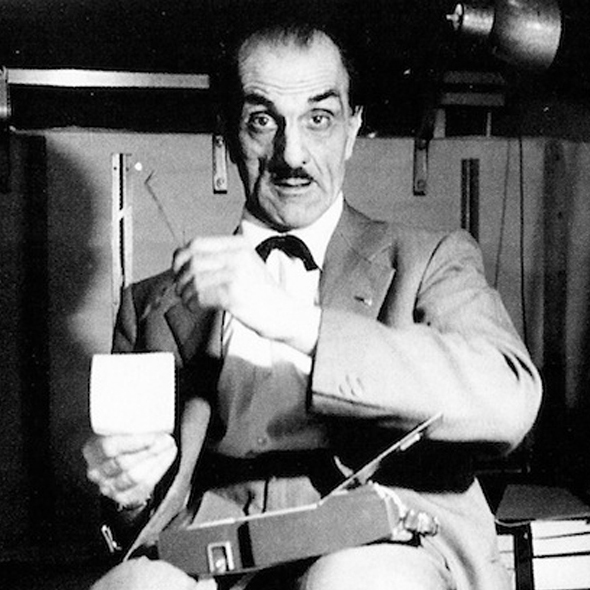
Carlo Mollino, a versatile, inspired and highly idiosyncratic individual of innate ability to synthesise diverse influences and passions, is today acknowledged as one of the most strikingly original creators of mid-century Italian architecture, design and photography.
The son of Turin's most prominent architect and engineer, Carlo Mollino initially studied art history prior to enrolling at the School of Architecture, University of Turin, from where he graduated in 1931. He subsequently worked in his father's practice, and in 1933 won first prize in the competition for the Federazione Agricoltori headquarters in Cuneo. In the mid 1930s he began to design the elaborately surreal interior of his home, the Casa Miller, and in 1938 completed the Casa Devalle, an interior that for sheer baroque surrealism, exceeded even that of his own home. From the very beginning, these two domestic interiors, together with the Ippica equestrian complex, established Mollino as a forthright and flamboyant architect operating in an idiom entirely of his own creation. Unlike his architect compatriots, and the other luminaries of European architecture, Mollino appeared never to delude himself through aspirations of lofty theoretical notions, preferring instead his own personalised vocabulary, described in 1948 by the American designer George Nelson as 'Turinese Baroque'.
From the late 1940s until the mid-1950s, Mollino produced a spectacular portfolio of works and projects, including domestic commissions, Alpine resorts, hotel interiors and commercial developments. It was, however, through the diversity of his own interests that his projects acquired such a personal resonance, and consequently one also encounters designs for automobile racetracks, for filling stations and for aircraft hangers. Mollino's background in technical engineering supplied the inspiration not only for the types of architectural projects that many architects would deem too trivial, but also materialised as practical applications, illustrated by his skills as an automobile designer, his holding of various technical patents, and by his early designs for radio-gramophones. Furthermore, Mollino's writings contributed to the dialogue on subjects as diverse as the art of Georg Grosz and of Cubism, techniques of skiing, and critiques of cinema and the first compendium on the history of photography that was ever published in Italy.
Both as a designer and as an individual, Mollino articulated an enigmatic and romantic symbolism, as best expressed by the mobile sensuality of many of his furnishings. Here was not a designer who felt compelled to provide a strict rationality for his designs, but rather an individual who wished to impregnate the inanimate with feeling, movement and a coded mythology. Consequently, furnishings acquired the eroticism of a female form, wall treatments alluded to the feel of flesh, and colour palettes struck chords of symphonic sensuality, while the female form in his photographs assumed more and more the stylized perfection of objects and the dramatic effect of stage design.
Throughout his life Mollino maintained two consistent pastimes, those of photography and eroticism. Eroticism, and in particular the female form, were insistent subjects that permeated many aspects of Mollino's work as an architect, designer and photographer. His earliest series of erotic female portraits, classified as 'Lina' were taken in the mid-late 1930s, both in the Casa Miller and in his studio, and were generally surrealistic in style.
Throughout the 1940s and 50s Mollino continued to explore eroticism in photography, however it was subsequent to his encounter with Polaroid instant cameras in 1963 that he abandoned all other types of photographic equipment, preferring the instantaneous uniqueness of the Polaroid print.
Throughout the late 1950s and 1960s, Mollino continued to work on numerous projects and exercises, however turned increasingly to concentrate on technical projects, such as aircraft design, and to pursue his dominant passion for photography. Mollino died in 1973, and for such a versatile creator, there now remains remarkably little physical evidence by which to define him. Only a dozen of Mollino's buildings now remain, most having been destroyed, abandoned or altered beyond recognition, and his furnishings were generally produced in limited quantities specific only to a particular commission. Also his polaroids are extremely rare being all unique objects that Mollino always considered as very intimate and personal projects never shown publicly.